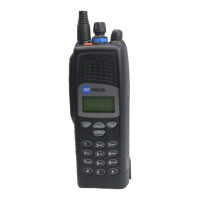TP9100 Service Manual General Information 85
© Tait Electronics Limited May 2005
Transmitter Issues
The following issues relate to the operation of the transmitter:
■ RF burns
■ antenna loading
■ test transmissions
■ accidental transmissions
■ distress beacons
The precautions required in each case are given below.
Caution Avoid RF burns. Do not touch the antenna while the
transmitter is operating.
Important The radio has been designed to operate with a 50Ω
termination impedance. Do not operate the transmitter
without a suitable load. Failure to do so might result in
damage to the power output stage of the transmitter.
Important While servicing the main board, avoid overheating the
radio during test transmissions. The following is good
practice: Secure the main-board assembly in the chassis
with the two external screws and one of the internal screws.
The heat-transfer block must be secured to the main board.
The lid of the radio body may be left off. After completing
any measurement or test requiring activation of the
transmitter, immediately return the radio to the receive
mode.
Important Under certain circumstances the microprocessor can key on
the transmitter. Ensure that all instruments are protected at
all times from such accidental transmissions.
Note The frequency ranges 156.8MHz±375kHz, 243MHz±5kHz,
and 406.0 to 406.1MHz are reserved worldwide for use by distress
beacons. Do not program transmitters to operate in any of these
frequency bands.

